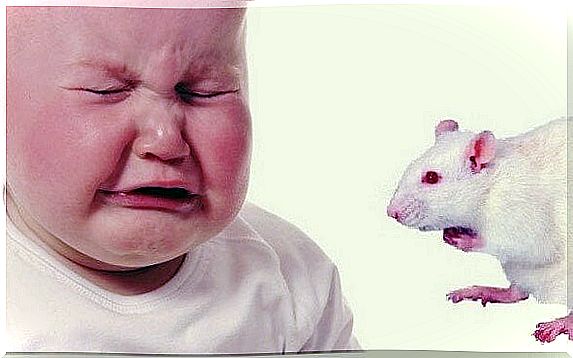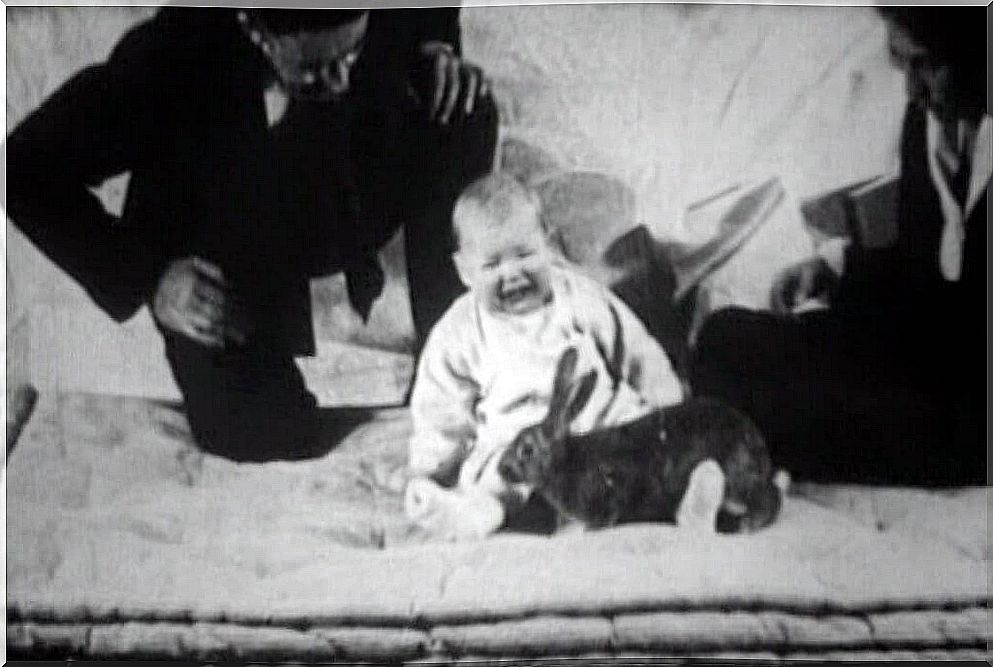Little Albert’s Experiment

John B. Watson is known as one of the fathers of classical conditioning. His main intellectual reference was Pavlov, the physiologist of Russian origin who made the first discoveries about conditioning. Watson carried out a famous study known as the Little Albert experiment.
We will tell the case in parts. Ivan Pavlov performed a famous experiment with dogs. We can say that it was one of the most important paragraphs in the introductory chapter of what would become psychology as a science. He discovered the basics of stimulus- response functioning and laid down the principles of what was called “classical conditioning.”
What Pavlov did with the dogs, Watson tried to replicate in the experiment with little Albert. In other words, experimented with human beings. In this case, a baby was manipulated to prove his theory.
Pavlov’s experiments
Ivan Pavlov was a great researcher of nature. After studying several disciplines, he became interested in physiology, and it was exactly a physiological element that allowed him to discover conditioning from the stimulus-response scheme.

Pavlov noticed that dogs salivated before receiving food. Then, he discovered that these animals “prepared” to eat when the time came. They related it to the stimulus. This observation made him curious to begin his experiments. That’s how he began to introduce different stimuli before serving food to the animals, in the form of a warning.
The most famous of these elements was a bell. He got to the point of proving that dogs salivated when they heard the bell. They knew that this sound preceded the arrival of their food. In this way, they had conditioned themselves to this situation. The sound, which was the stimulus, provoked a response, salivation.
The Background of Little Albert’s Experiment
John B. Watson was a radical positivist. He thought that human behavior should be studied solely on the basis of learned behaviors. For him there was no sense in talking about genetic elements, unconscious or instincts. For him, only observable behavior should be studied.

Watson was a researcher at Johns Hopkins University in Baltimore (United States). It started from the idea that in every human being, most behavior can be explained by our learning history, based on conditioning. So it seemed like a good idea to try to demonstrate that Pavlov’s conclusions could also be applied to human beings.
So, together with his assistant, Rosalie Rayner, he went to an orphanage and chose a baby just 8 months old. He was the son of one of the caretakers at the orphanage. Even with that connection, he lived in an environment where coldness reigned. The baby was completely calm. Thus was born Little Albert’s experiment.
Little Albert’s Experiment
In the first phase of little Albert’s experiment, he was presented with various stimuli. The aim was to see which ones caused fear. It was proven that fear only manifested itself when he heard loud sounds. This was common to all children. Apart from that, he didn’t show any fear in front of animals or even fire.
The test proceeded to induce a fear by conditioning. The baby was presented with a white rat, and he wanted to play with it. However, when doing this, the researchers sounded a loud sound that frightened him. After repeating the same procedure several times, the baby ended up being afraid of the rat. Then other animals were introduced, such as rabbits, dogs, and even fur coats. In all cases, the child ended up conditioned. I was afraid to see these elements.
The baby spent a lot of time being tested. Little Albert’s experiment lasted nearly a year. In the end, the baby had gone from being very peaceful to living practically in a state of continual anxiety . He got to be afraid of a Santa Claus mask. The researchers forced him to touch the mask, which caused a crying spell. Finally, the University expelled Watson for his controversial experiment and also for starting a romance with his assistant.
The second phase of the experiment consisted of reversing the conditioning; that is, “unconditional” previously conditioned fears. However, this was never accomplished. It is not known what happened to the baby after the famous experiment. However, a publication at the time reported that the child died at the age of 6, due to congenital hydrocephalus. Therefore, the results of the macabre experiment could come to be questioned.
In any case, little Albert’s experiment is one of the most famous in the history of psychology. Because of the level of its pretensions, its conclusions, and mainly because it violates a series of rules of conduct that today any researcher would have to respect when carrying out an experiment.









